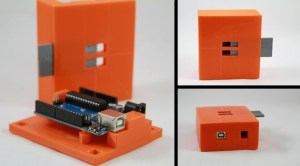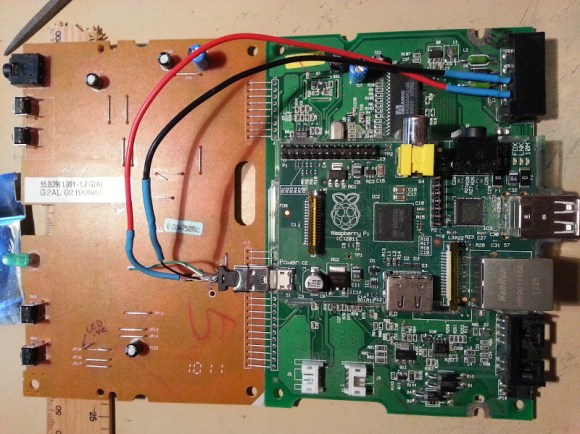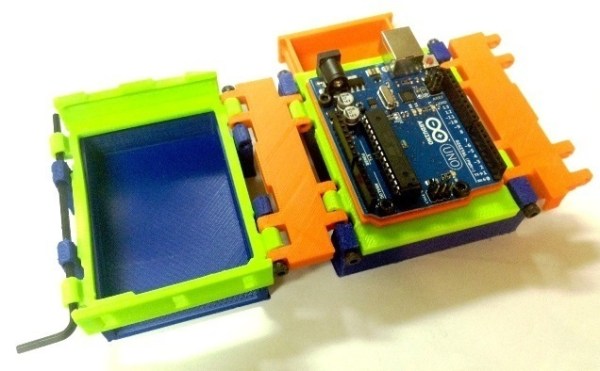It is hardly news that you can use your smart phone as a really crummy oscilloscope. You can even use it as an audio frequency signal generator. There are also plenty of projects that allow you to buffer signals going in and out of your phone to make these apps more useful and protect your phone’s circuitry to some degree. What caught our eye with [loboat’s] phone oscilloscope project was its construction.
case building5 Articles
DIY Arduino Cases You Never Knew Existed
There are sure a lot of varieties of Arduinos out there but there may even be more of a variety when it comes to Arduino Cases. Let’s take the most popular Arduino form factor, the Uno. Below are a handful of unique cases for the Uno-sized boards.
by [Megaduty], Arduino Protection Box 
We’ll call this one robust. Although it is 3D printed, its intent is to be extremely protective of the inhabitant. Some extra thought went into this case, no tools are needed! After the Arduino snaps into place, so does the cover. There is an access door to get the input/output wires to the free world. [Megaduty] suggests that this contains $0.10 of plastic. Not a bad deal.
RasPi “Inception” CD-ROM Case Mod

At first glance, [John’s] CD-ROM RasPi case may not seem all that unique, but we like both the implementation as well as the end-result functionality it provides. His goal was to use the Pi as a torrent downloader, and to store the downloaded files on a shared network drive. The Pi drive would slide into a bay in the server’s case—hence the Inception reference: a computer in a computer—allowing downloads while putting another step between the server and the outside world keeping, as well as guaranteeing that the network share would be available, because the server and the Pi would use the same power source.
[John] gutted the CD-ROM’s internals to leave only the PCB, which he stripped of most everything save for the power connector in the back. He then used the base of his old RasPi case as a standoff, mounting it to the top of the CD-ROM’s PCB. He soldered the power lines to the ROM’s power connector and temporarily hooked up a 5V adapter until he gets the server running. The final step was to carve out the back of the case for access to the Ethernet and USB ports, which [John] accomplished with a dremel, a hacksaw and a file. The front of the case still looks like a stock CD-ROM drive, and [John] has plans for future mods: re-purposing the LED to show network activity and modifying the buttons to serve as a reset, pause, or start for torrent downloads.
The Weighted Companion Cube Will Never Threaten To Stab You And, In Fact, Is A Subwoofer

From the techPowerUp! forums comes an awesome weighted companion cube subwoofer built by the metonymical user named [Cube].
This build started off as a coffee table that was to have an oval glass top (no word if the edges were going to be blue or orange). The guts of the cube are taken from a 400 Watt sub. As any good sub builder would, [Cube] kept the air volume and port tuning of the donor box.
We’ve seen a companion cube sub before that featured EL wire for a ‘glowing cube’ effect, but [Cube] may have taken things a little too far by including glowing rings on each side of the cube. The rings lit by 2,500 LEDs mounted on pieces of perspex and wired point-to-point. While [Cube] claims he’s ‘not a electronics guru,’ he certainly has a lot of patience to assemble those lights.
Check out [Cube]’s YouTube build video after the link. Credit to [Todd] for sending this one in.
Xbox Crammed Into Inch-thick Package

Reminiscent of [Ben Heck]’s portable and laptop console mods, [Bandit5317] over at Xbox-Scene managed to fit the guts of an original Xbox into a custom-built slim case that measures just 2.5 centimeters thick. In his post, he describes some of the difficulties of cutting down a behemoth Xbox to a third of its original size, such as rewiring a custom IDE cable to avoid the extra 1/16-inch it would take to fold a standard one. The case is hand-crafted, (no laser cutter!) no-frills box made of painted polycarbonate, and man is it sexy. It is built off of a v1.4 motherboard running a third-party BIOS and with a 320GB laptop hard drive. Load up XBMC Media Center and you’ve got the slimmest home theater PC on the block.
[thanks FranklyCrafty]













